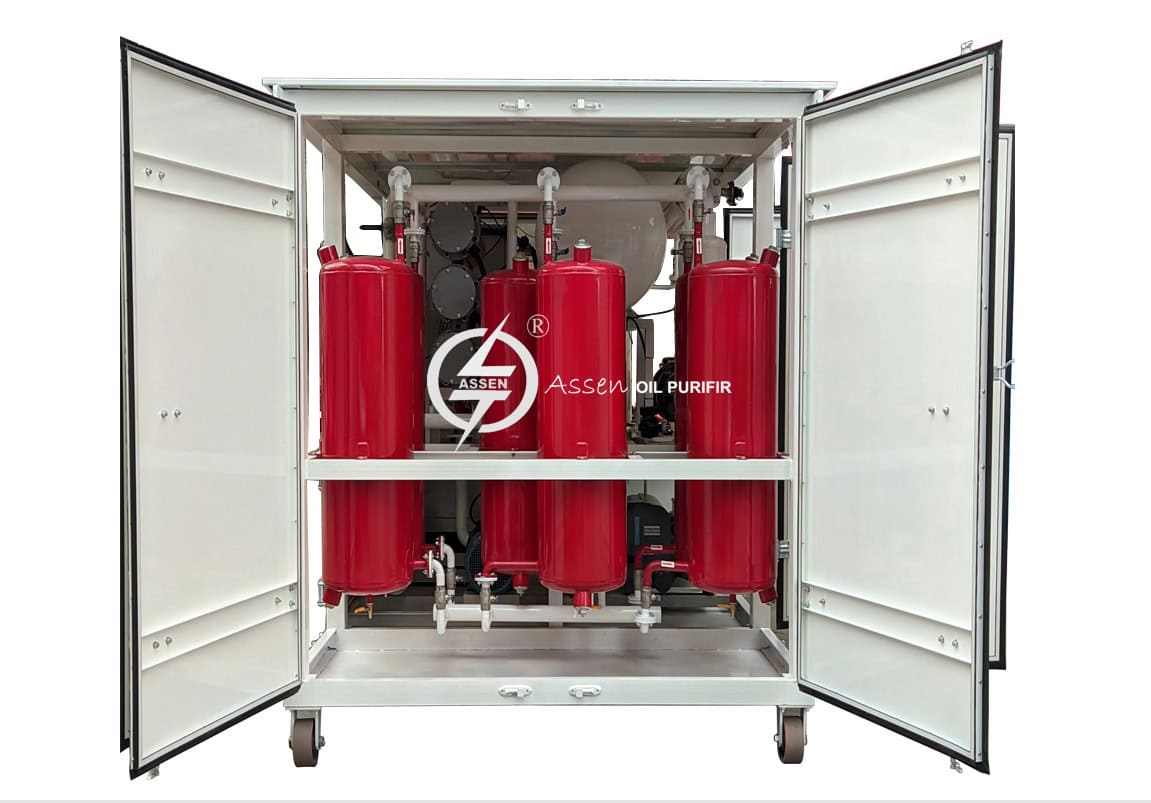Just How Regenerated Transformer Oil Prolongs Transformer Life-span
The role of transformer oil is vital in ensuring the reliability and durability of transformers, serving as both an insulator and coolant. Restored transformer oil provides an engaging option to enhance these features by efficiently removing dangerous pollutants that jeopardize performance. With a thorough regeneration process, the oil's dielectric buildings and thermal stability can be brought back, causing considerable enhancements in functional performance. Recognizing the intricacies of this process and its more comprehensive implications for transformer upkeep reveals a path to not only prolong life-span however likewise enhance expenses in power administration systems.
Value of Transformer Oil
Transformer oil plays a crucial role in the efficient operation of electrical transformers. It mostly functions as a shielding medium, making sure and stopping electric discharges that parts run securely under high voltage problems. The oil's dielectric properties are fundamental to maintaining the integrity of the transformer, as they lessen the danger of failures that might cause expensive downtimes or tragic cases.
In addition to its protecting abilities, transformer oil likewise functions as a coolant. As transformers run, they create warm that should be dissipated to stop getting too hot and succeeding damage. The oil circulates within the transformer, soaking up and moving heat far from essential elements, thus maintaining optimum operating temperature levels.
Furthermore, transformer oil works as a barrier against dampness and impurities, which can compromise the efficiency and durability of the transformer. Its chemical residential properties assist in neutralizing acids and various other byproducts that might develop over time, adding to the general health and wellness of the electric system.
Advantages of Regenerated Oil

In addition, regenerated transformer oil has a lower degree of contaminations, including bits and impurities that can deteriorate efficiency. This pureness not only improves the oil's thermal conductivity yet also prolongs the functional life expectancy of transformers by minimizing overheating dangers. The boosted thermal security of regenerated oil makes sure regular performance even under high operating temperatures, which is essential for maintaining transformer effectiveness.
An additional benefit is its environmental effect. Restored oil promotes sustainability by decreasing waste and the requirement for brand-new oil production, consequently lowering the carbon impact connected with transformer upkeep. Transformer Oil Regeneration Process. In addition, the long life of restored oil translates to lower maintenance costs over time, as fewer oil modifications and much less constant equipment downtime are required.
Process of Oil Regeneration
The regeneration of transformer oil involves a systematic process designed to restore the oil's initial residential properties and improve its performance. This process generally begins with the elimination of the utilized oil from the transformer, which is then subjected to numerous filtration methods.
The very first step in the regeneration procedure is the filtering, where solid contaminants such as metal, sludge, and dust fragments are gotten rid of. This is typically followed by vacuum cleaner purification, which assists to remove dampness and unstable compounds, thereby boosting the oil's dielectric stamina.

Impact on Transformer Efficiency
Bring back the properties of regenerated transformer oil significantly affects the overall efficiency of transformers. Enhanced dielectric toughness is among one of the most vital benefits, as it enables for far better insulation and decreases the likelihood of electric breakdown. This enhancement leads to a more secure operation under high voltage problems, eventually bring about enhanced performance.
In addition, the removal of impurities and deterioration products throughout the regrowth procedure reduces the threat of overheating. Cleaner oil helps with far better warmth dissipation, which is vital for keeping optimal operating temperatures. As an effect, the thermal performance of the transformer is improved, enabling for greater loads without jeopardizing dependability.
Furthermore, the chemical security of restored oil makes certain prolonged operational life. It withstands oxidation and destruction, lowering the frequency of maintenance interventions and oil replacement. This security not just adds to Go Here boosted performance yet additionally straightens with sustainability goals by reducing waste.
Future of Transformer Upkeep
As advancements in innovation remain to reshape the landscape of electrical engineering, the future of transformer upkeep is positioned for significant improvement. The integration of clever technologies, such as IoT sensors and anticipating analytics, enables real-time monitoring of transformer health and wellness, boosting the capacity to preemptively deal with concerns before they rise right into major failings. This aggressive method not just optimizes operational effectiveness however likewise expands the lifespan of transformers.
Furthermore, the application of expert system (AI) in information analysis enables even more exact mistake discovery and diagnosis. By leveraging maker learning algorithms, maintenance teams can identify patterns in functional information that human analysts may ignore, bring about even more educated decision-making.
In addition, the adoption of eco-friendly techniques, including the use of regenerated transformer oil, is readied to redefine maintenance methods. This lasting approach not just decreases ecological influence however additionally boosts the overall health of the transformer.
Finally, the change towards automation in upkeep procedures is anticipated to helpful site improve procedures, lower downtime, and reduced prices. As these advancements remain to advance, the future of transformer maintenance will undoubtedly end up being a lot more efficient, reputable, and lasting, ensuring the integrity of crucial electric framework.
Conclusion
The use of regenerated transformer oil dramatically boosts the functional long life of transformers. Inevitably, the fostering of restored oil stands for a crucial innovation in transformer upkeep, ensuring optimal performance and sustainability in the management of electric infrastructure.
The role of transformer oil is crucial in making sure the dependability and long life of transformers, offering as both an insulator and coolant.Transformer oil browse around this site plays an essential function in the effective operation of electrical transformers. Regrowed oil advertises sustainability by lowering waste and the need for new oil manufacturing, therefore reducing the carbon footprint associated with transformer maintenance.Restoring the residential properties of regenerated transformer oil significantly influences the overall performance of transformers.The usage of regenerated transformer oil considerably enhances the functional durability of transformers.